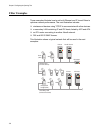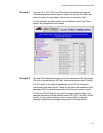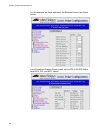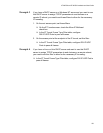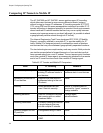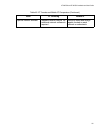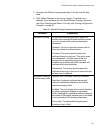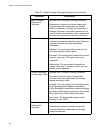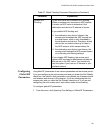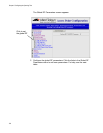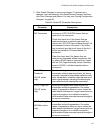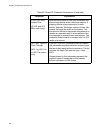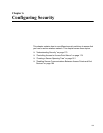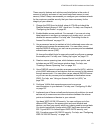
Chapter 5: Configuring the Spanning Tree
164
Allow Multicast
Outbound to
Terminals
Appears only if Multicast Flooding is enabled.
Determines if outbound multicast frames with
unknown destination addresses are flooded
toward end devices. Typically, this parameter is
checked. However, if your wired devices do not
need to initiate communication with wireless end
devices, you may want to clear this check box.
Unicast Flooding Determines the flooding structure when this
access point receives inbound unicast frames on
non-root ports with unknown destination
addresses:
Disabled: You do not want the access point to
flood any inbound unicast frames.
Universal: The access point forwards the unicast
frame to every port. This option uses more
bandwidth.
Hierarchical: The access point forwards the
unicast frame only to the port to which the root
access point is attached.
Unicast Outbound
to Secondary LANs
Appears only if Unicast Flooding is enabled.
Specifies if outbound unicast frames with
unknown destination addresses are flooded
toward secondary LANs:
Enabled: The root access point controls flooding
for all the designated bridges on secondary
LANs. Enabling this parameter makes managing
secondary LANs easier because you do not need
to set secondary LAN flooding parameters.
Set Locally: The designated bridges control
flooding on their LANs.
Allow Unicast
Outbound to
Terminals
Appears only if Unicast Flooding is enabled.
Determines if outbound unicast frames with
unknown destination addresses are flooded
toward end devices.
Table 47. Global Flooding Parameter Descriptions (Continued)
Parameter Explanation



